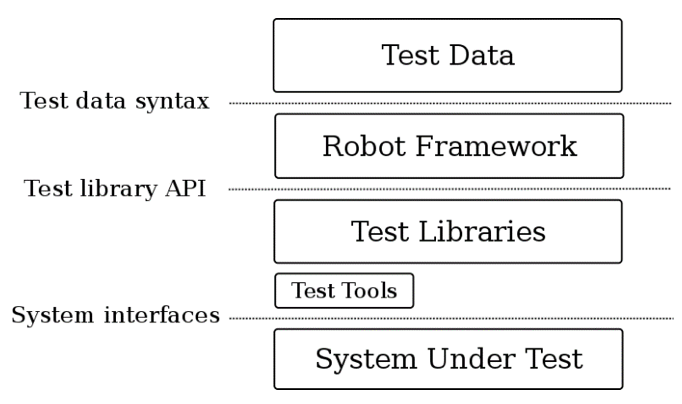About Robot Framework
Robot Framework is a generic test automation framework for acceptance testing and acceptance test-driven development (ATDD).
It has easy-to-use tabular test data syntax and it uses the keyword-driven testing approach.
Robot Framework Concepts
Robot Framework modular architecture can be extended with bundled and self-made test libraries.
Test suites consist of a file containing test cases, and a directory containing these suite files creates a nested structure of test suites.
Robot is capable of generating a report for each execution in Robot's specific XML format, XUnit and HTML data formats.
The native Robot framework's XML format has a well-defined XML schema associated, and represents the pattern in which the framework executes the keywords given in that particular test suite.
Importing Robot Framework XML reports
Each Robot test case can be marked with a Tag identifying the requirement tested by a particular test case; it also can be a Test definition already present in JIRA. Tagging a requirement in a test case will create a link between the test case and the requirement. Identifying a test case with an issue key Tag, will create a test execution for the pre-existing Test (it does not create any new Test in this case).
It is important that the "Requirements issue types mapping" is configured at the point of import, otherwise no link will be created (you may refer to this page to learn more about issue type mapping Issue Type Mapping).
Below is a simplified example of Robot Framework XML report. In the example there are some nested test suites, and one failed test marked with Tags. In the example Tag WEB-1 corresponds to an existing Story we want to test, and WEB-3 is the Test issue key which contains the test definition.
Entities
Each Robot's test case is mapped to a Generic Test in JIRA, having the summary with the name of the test case, and the "Generic Test Definition" field contains the concatenated names of the test suites along with the name of the test case. Note that Robot frameworks considers the base folder of the project as the first test suite.
Please note
The way you run your tests also affects Robot's XML, so if you execute the file from somewhere else or you execute directly the file by passing it as argument, the test suites information will be potentialy different.
The name, error message, duration and status of Robot's keywords will be imported and stored in the test run results.
Note
Under the the Execution Details of the Generic Test, in the Context section it's possible to see information about each Robot keyword (i.e. step), along with the respective status.
This other example bellow shows the execution details page of a Test containing both test keywords and also the final test teardown keyword.
Status
Robot Framework's test case status maps directly to Xray test run status FAIL and PASS.
Note: Test Cases with the status FAIL, may have an error/failure message which can be seen in the Test Run screen, under the Results section.
Working example



